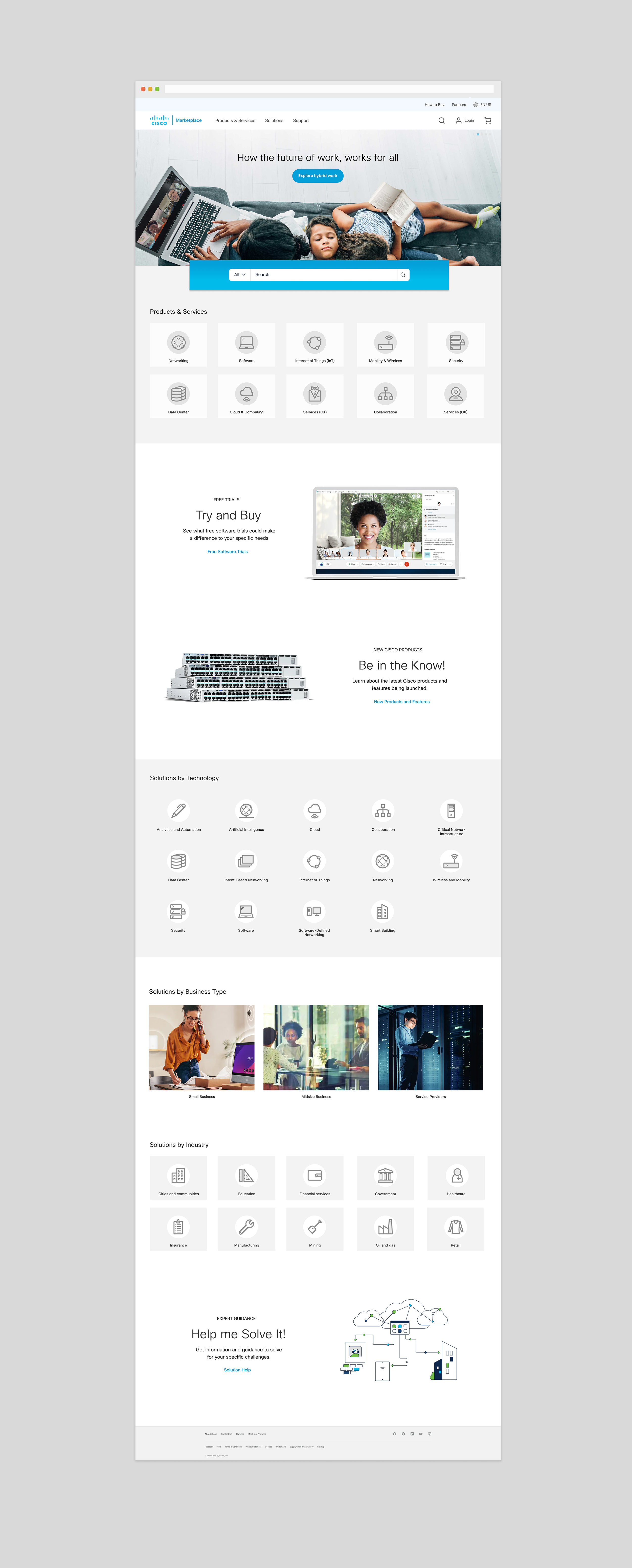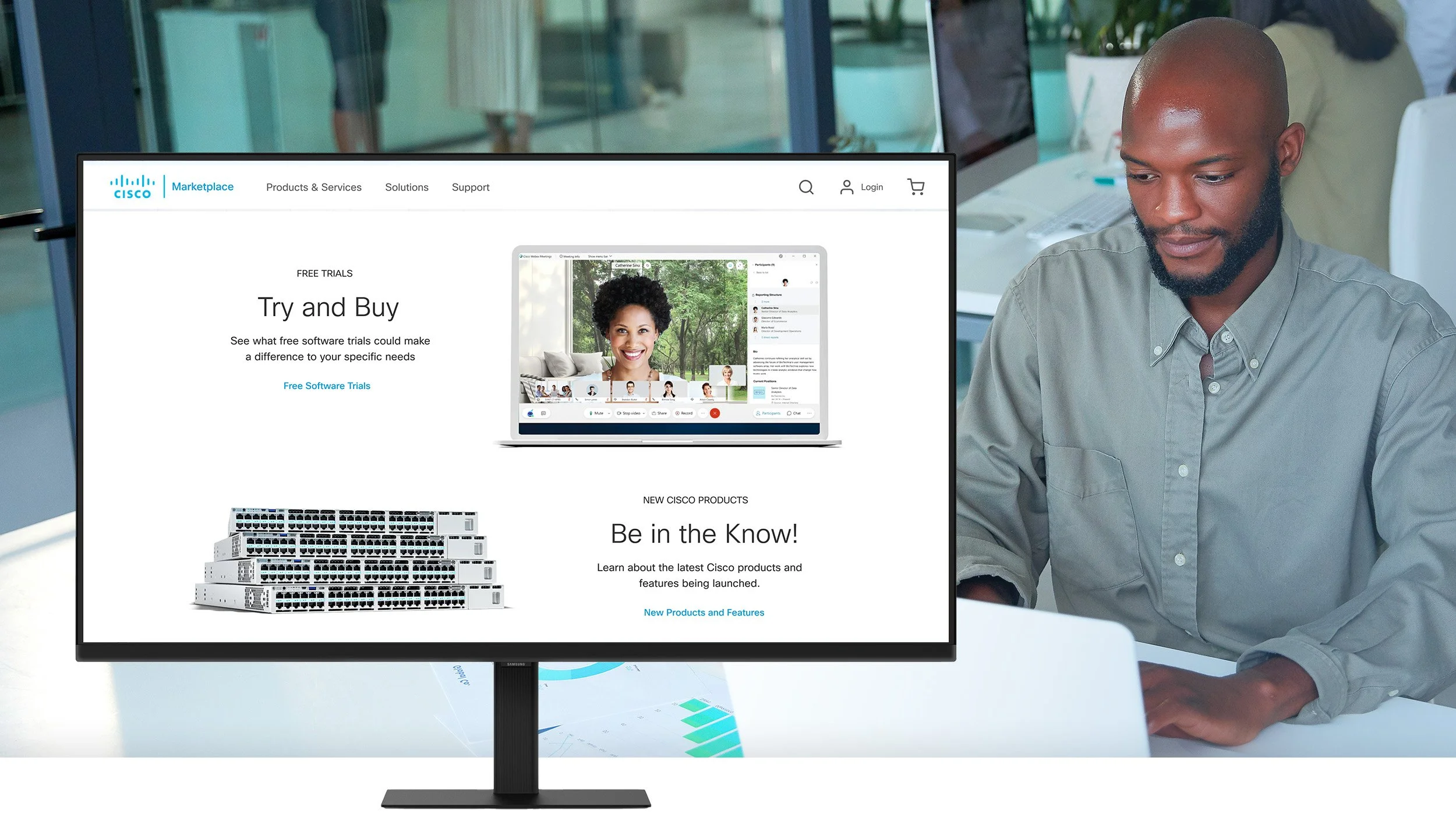
COLUMBIA BANK DIGITAL EXPERIENCE
Redesign of Core Consumer and Associate Banking Platforms
Domain: Fintech for Consumer, B2B, and Enterprise.
Overview: As UX Lead at Columbia Bank ($52B), I redesigned the consumer banking platform and the associate enterprise tool. For consumers, I streamlined workflows, expanded features, and removed friction, achieving 90% satisfaction in testing. For associates, I unified five legacy systems into a single interface with role-based customization, optimized navigation, and improved findability. This brought measurable efficiency gains, enabled faster service, and improved the employee experience.
Role: Led design and research, mapping workflows, creating prototypes, and collaborating and aligning solutions with compliance, engineering, and product leadership. Facilitated workshops with cross-functional teams and presented findings and outcomes to executives, relationship managers, and banking stakeholders.
Impact:
Improved clarity and reduced errors in complex digital banking workflows, achieving 90% customer satisfaction in testing
Increased efficiency for bankers managing client requests and approvals
Elevated the bank’s digital offering in line with both client expectations and regulatory compliance
Get a Tailored Deck or Walkthrough: Please feel free to contact me for a custom deck or 15-minute walkthrough highlighting the aspects of this work most relevant to your opportunities and priorities.
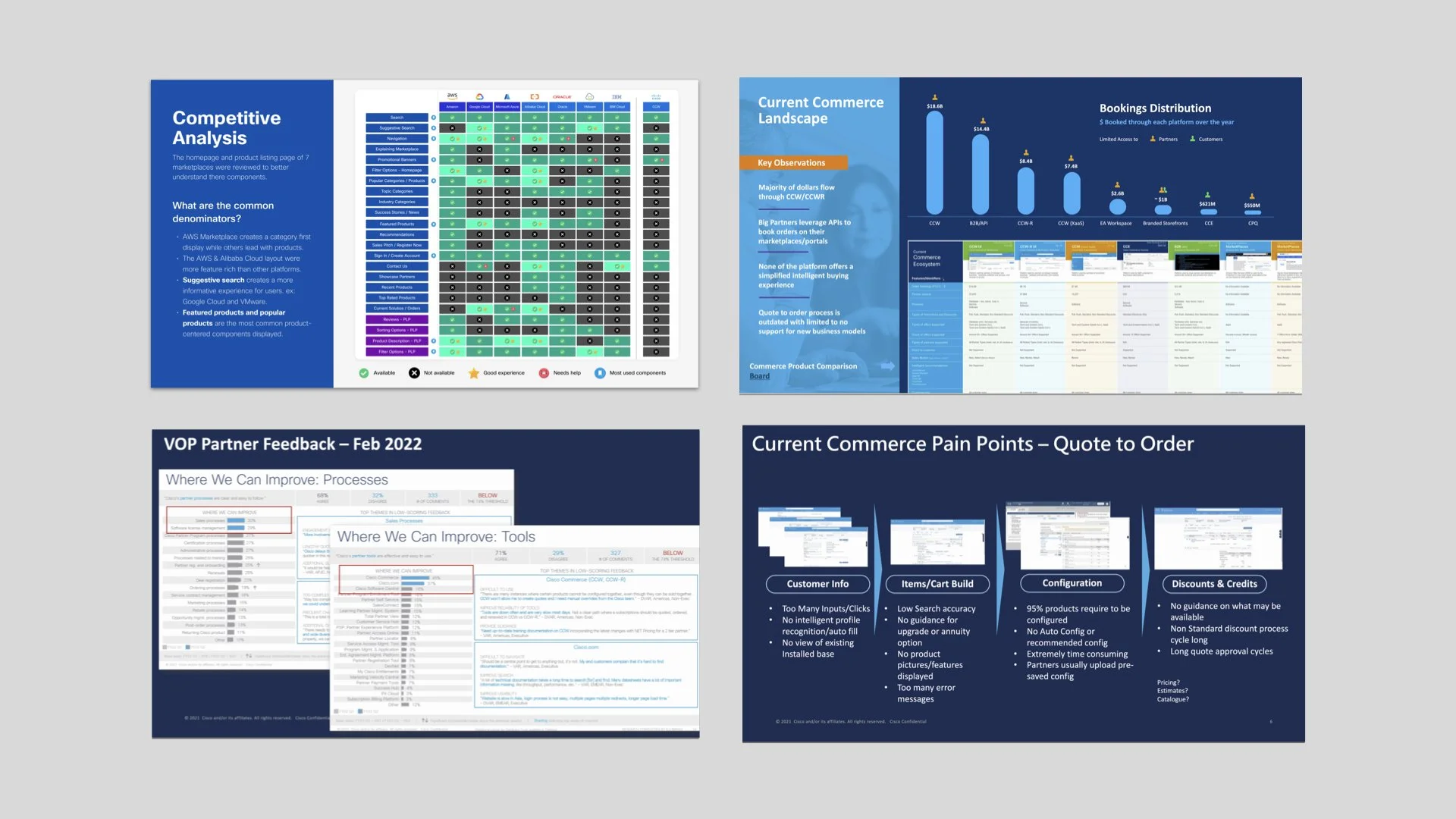
I started by establishing relationships with business partners and stakeholders to identify business needs and goals and the opportunities for the work.
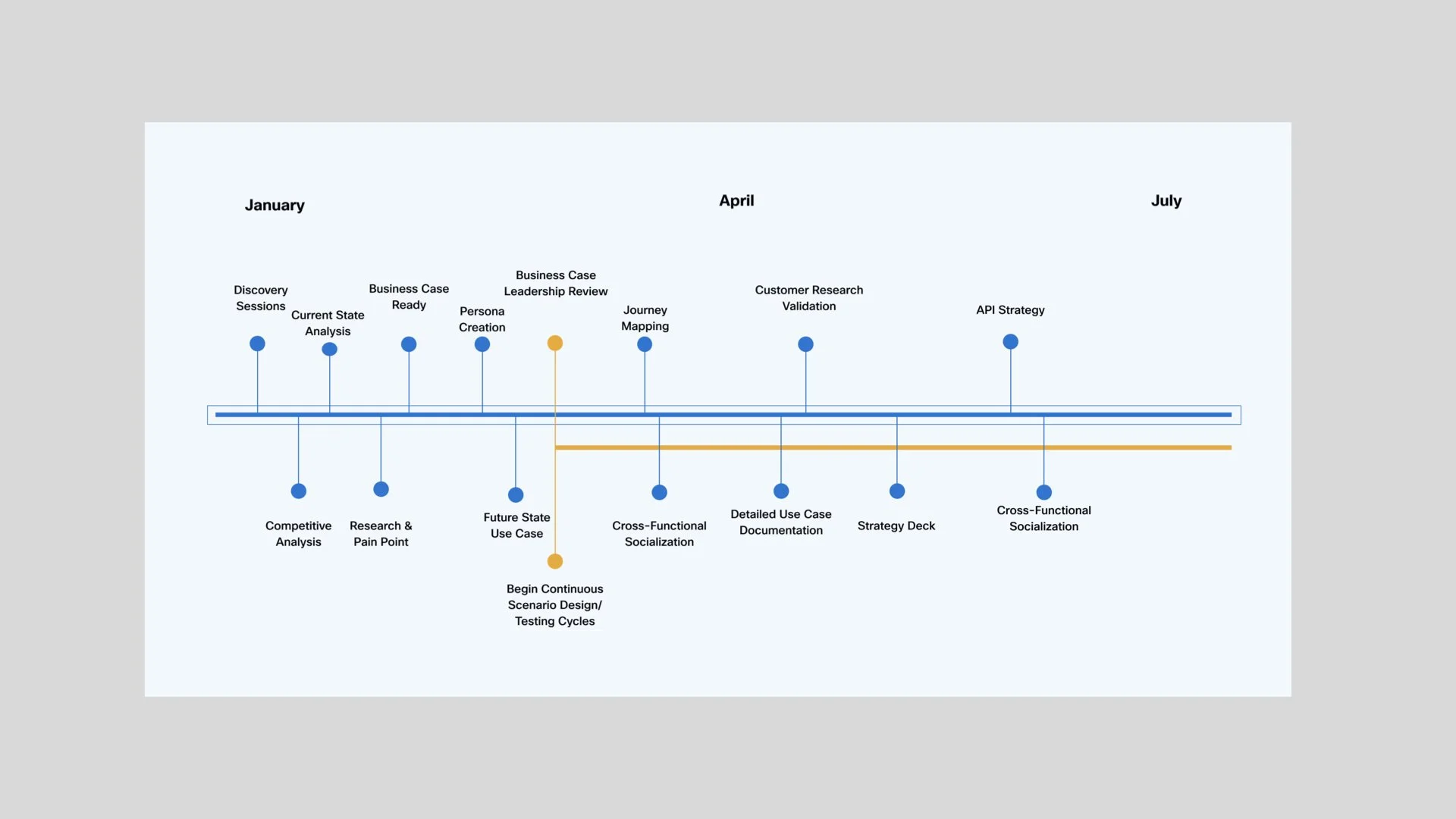
I created a roadmap and planned user research to understand how customers currently interact with Cisco and what could make those interactions more effective and profitable. This discovery work tested key business assumptions and revealed insights that led to design solutions focused on increasing value and profitability for Cisco’s customers.
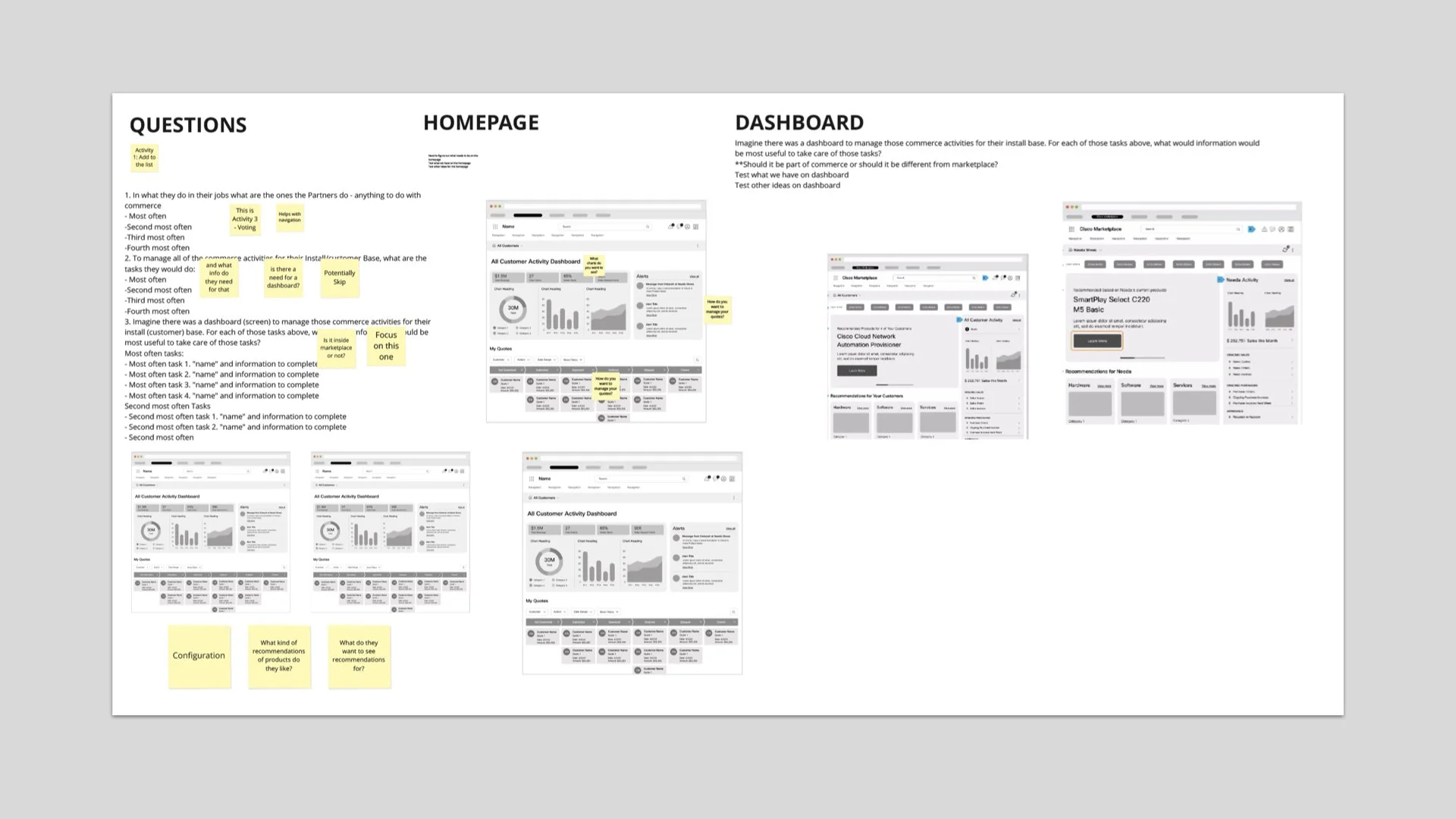
To inform the research, I called out key pieces of information that were important to learn from the testing and user interviews. I provided direction for key information needed with my team researcher and also participated and asked questions in the sessions.
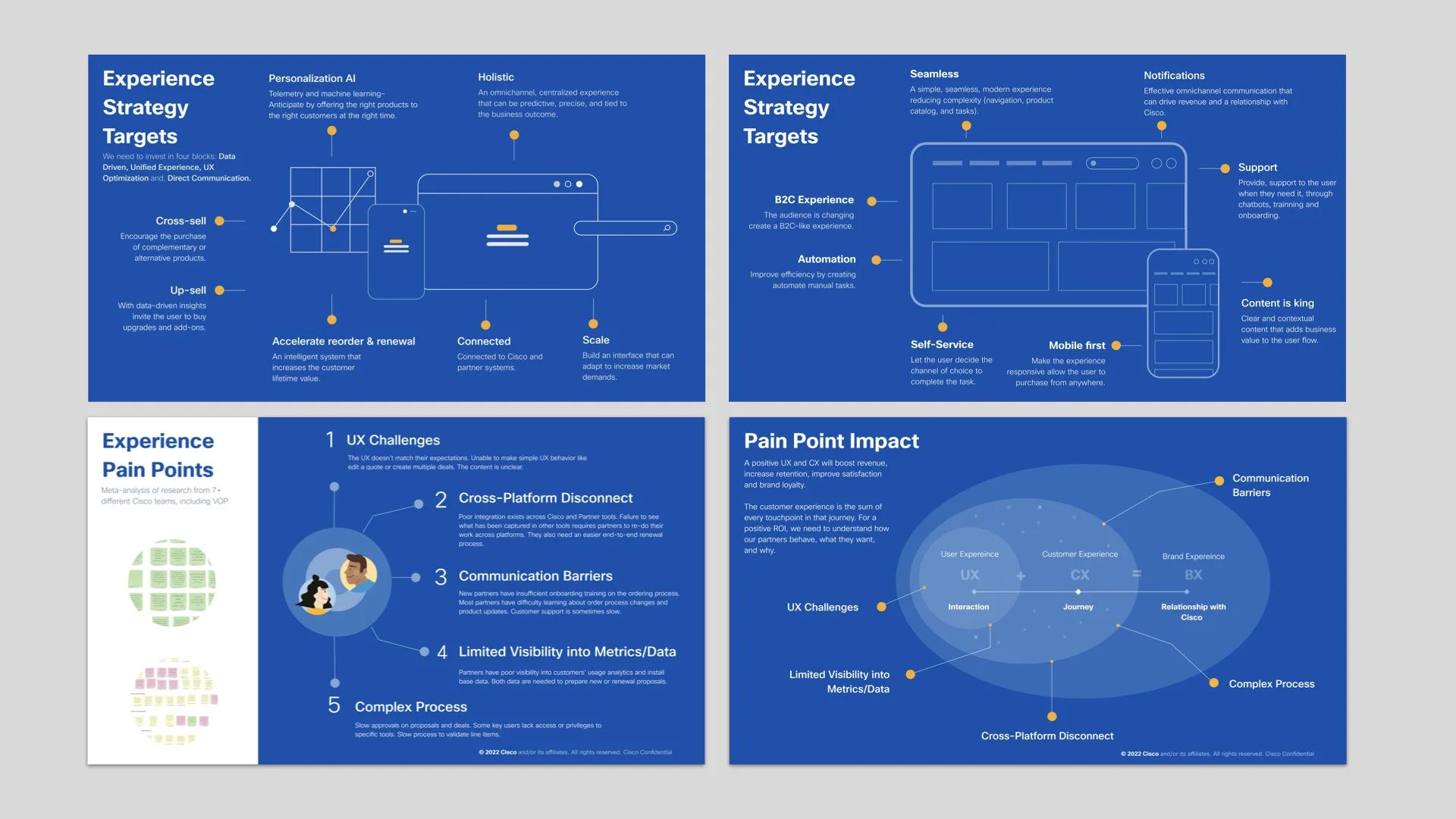
Using key insights from the business and Cisco partners, I identified pain points and experience strategy goals to guide the work. I also shared these findings with stakeholders to build alignment and maintain momentum.
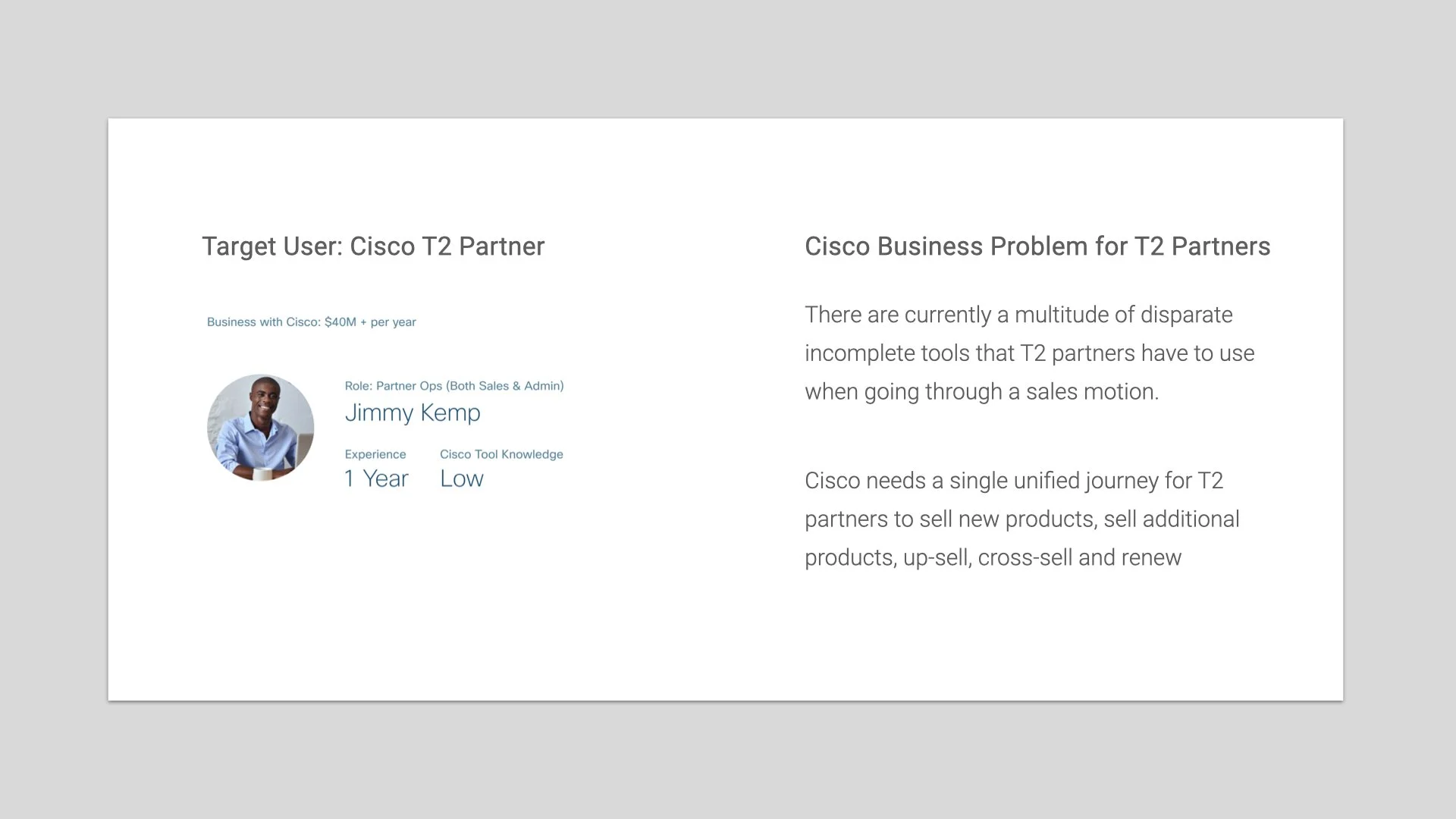
Cisco has many types of commerce users with distinct goals and pain points. To get started, I partnered with the Cisco business team to identify the most strategic user type to focus on—based on multiple factors—to guide initial research, design strategy, and early designs. This helped us move quickly, maintain momentum, and deliver early wins to build on.
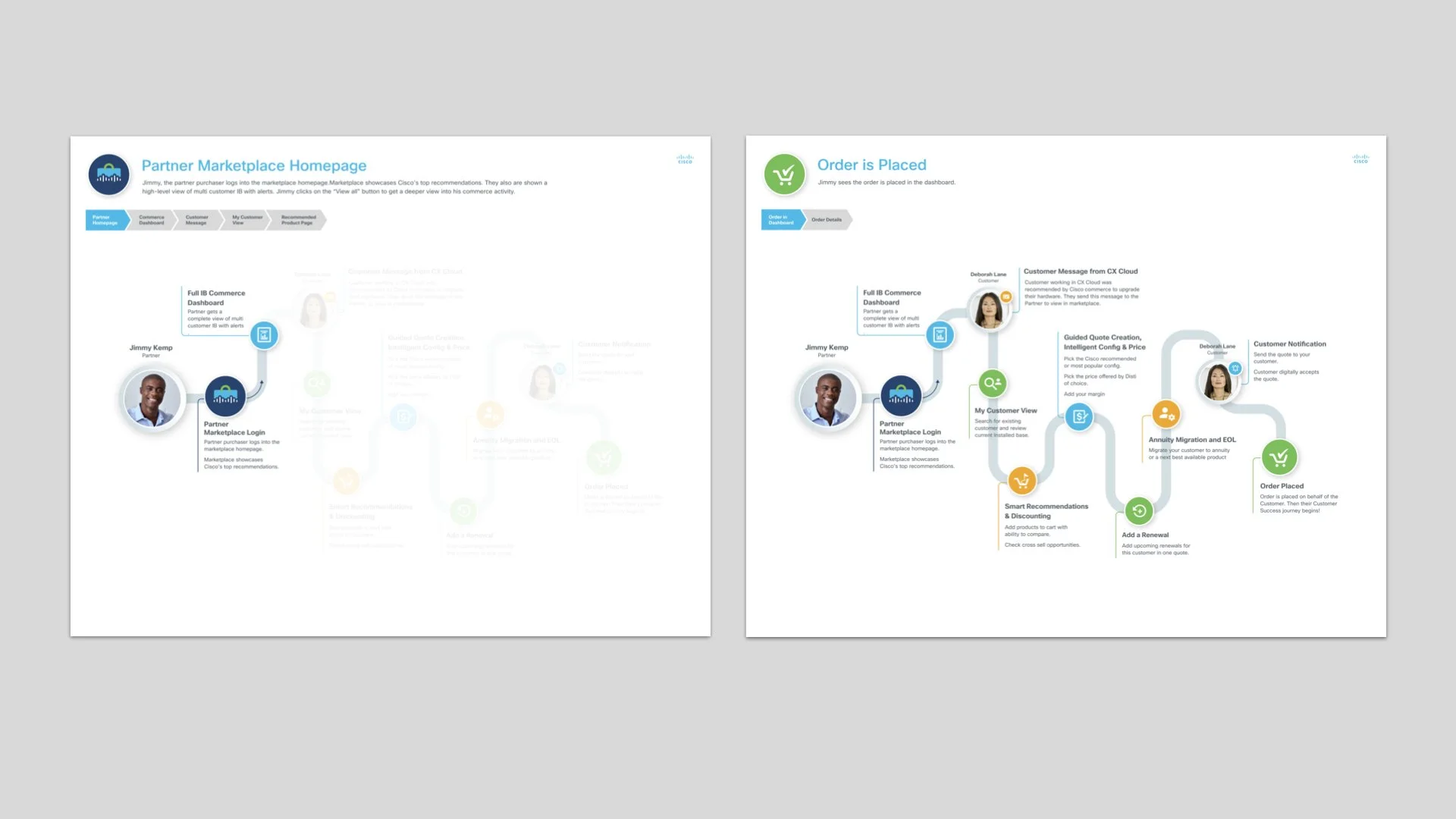
Securing buy-in from Cisco leadership and cross-functional stakeholders was essential. To support this, I defined a simple use case and user journey with a core set of interactions that could scale over time. This approach also made it easier to gather key insights and identify innovation opportunities through iterative review rounds.
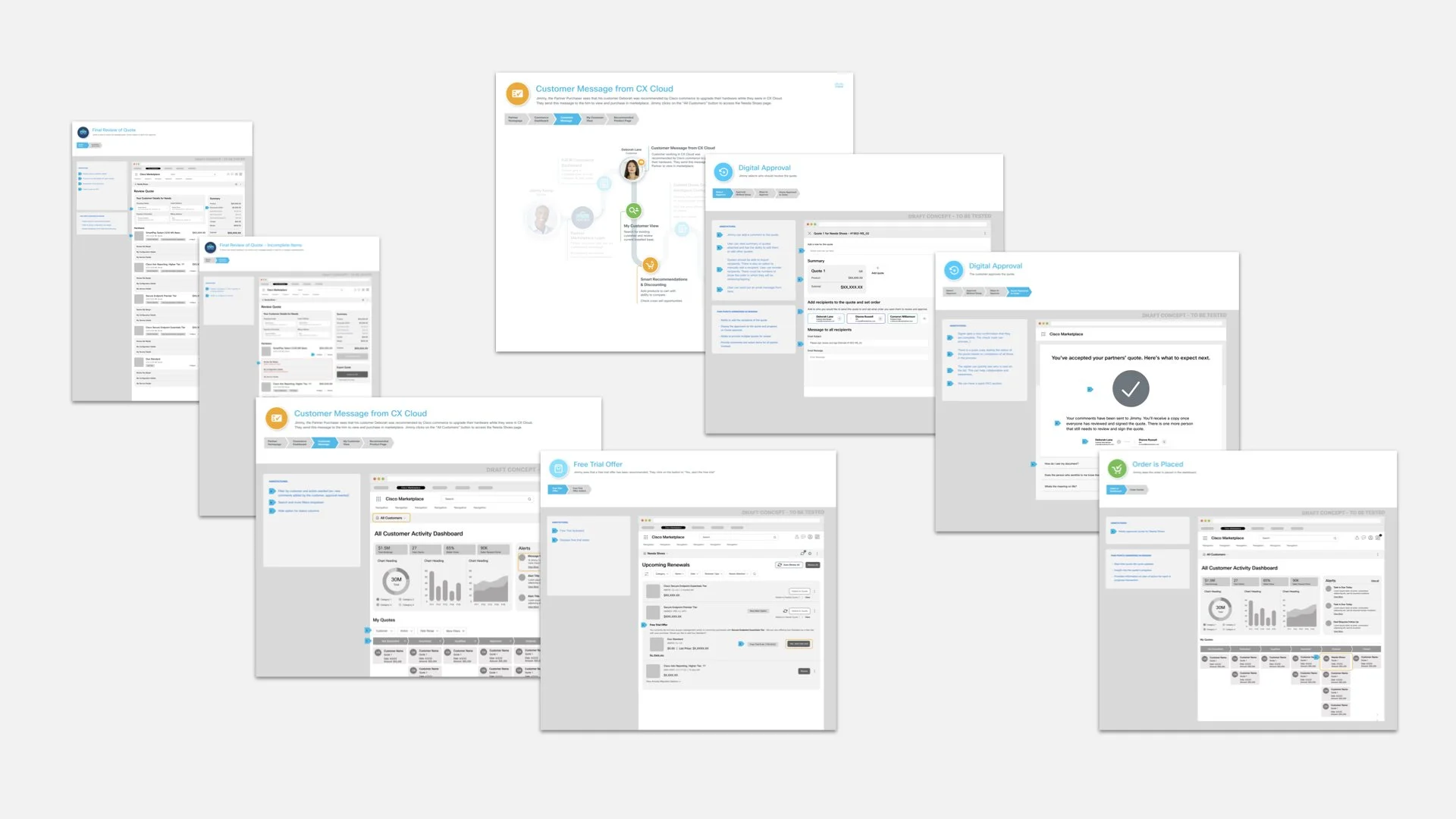
The commerce experience was complex—not just in the tasks Cisco partners needed to complete, but also due to the multiple layers of partnerships involved, including partner clients and both internal and external vendors. To ensure both efficiency and scalability, I developed a strategy and design framework that supported multiple workstreams, each addressing different user needs. I also expanded the user journey into detailed sub-steps, clearly outlining the design benefits for both Cisco and its users at each stage of the interaction.
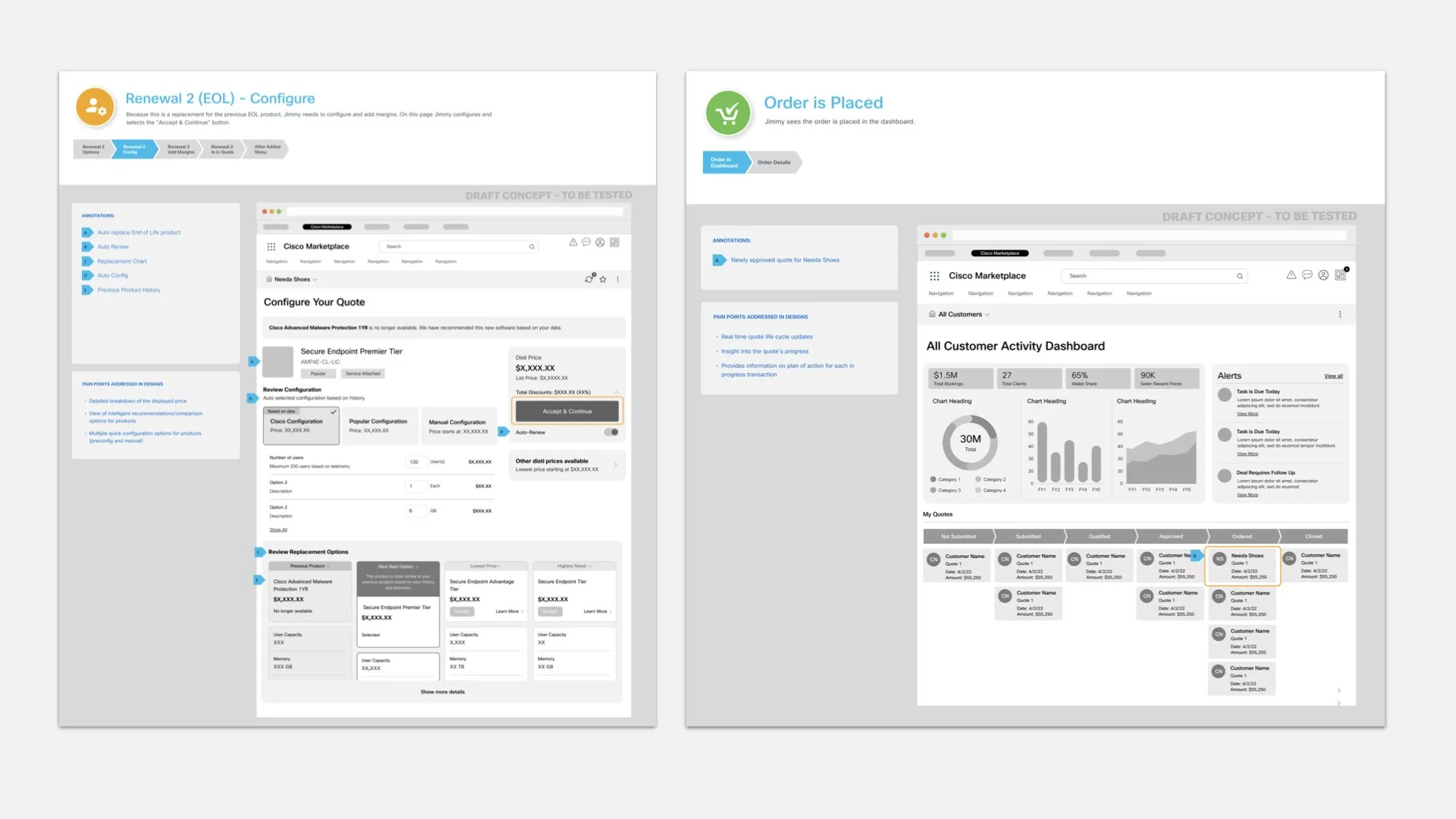
The detailed wireframes were mapped to key milestones in the user journey, with annotations highlighting design improvements and explaining how they enhanced efficiency and profitability for both Cisco partners and the business.
Below is an example of one of the higher fidelity designs and prototypes created for this initiative
